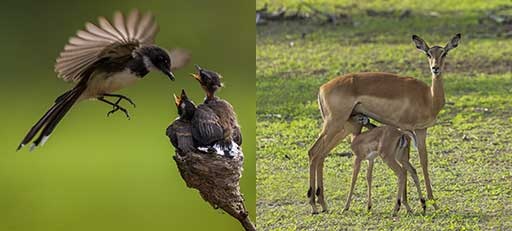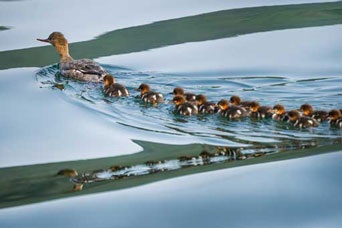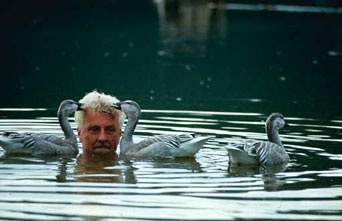1.1 The needs of immature young
Human infants, and indeed the newborns of any mammal species, cannot survive alone. They need the feeding, attention, care and protection of more mature individuals to enable them to grow and develop. By definition, newborn mammals need access to nutrition via suckling. As well as the need for food, there is also a need for security in terms of the protection that a more autonomous member of the same species can give – for example, against predators which find defenceless young animals an attractive and easy prey – and the need to learn crucial life skills from more knowledgeable and experienced individuals.
For a species to survive, there have to be efficient and robust mechanisms of behaviour in both the young and the carers that keep them together during the period of dependent immaturity.
It is not surprising that evolution has favoured such mechanisms and that they have, to varying degrees in different species, become instinctive in that they do not have to be learned. A particularly striking example is where the hatchlings of some bird species, such as ducks and geese, ‘imprint’ on their mother and follow them around. This provides them with protection and opportunities to learn about how to garner their own food resources.
Konrad Lorenz, an ethologist (one who studies animal behaviour), succeeded in having young greylag goslings imprint on him and follow him, by being the first moving object that the chicks encountered after hatching. He found that these young birds imprint on any moving object that is in the immediate environment during a ‘critical period’ shortly after hatching happens.
However, it is important to note that although the behaviour (following) is fixed, the target of the behaviour is not, in that it can be a goose parent, a human or a toy train, or indeed any other object. So the behaviour is adaptable at the same time; it involves some rapid learning about which object in the environment is to be the focus.



